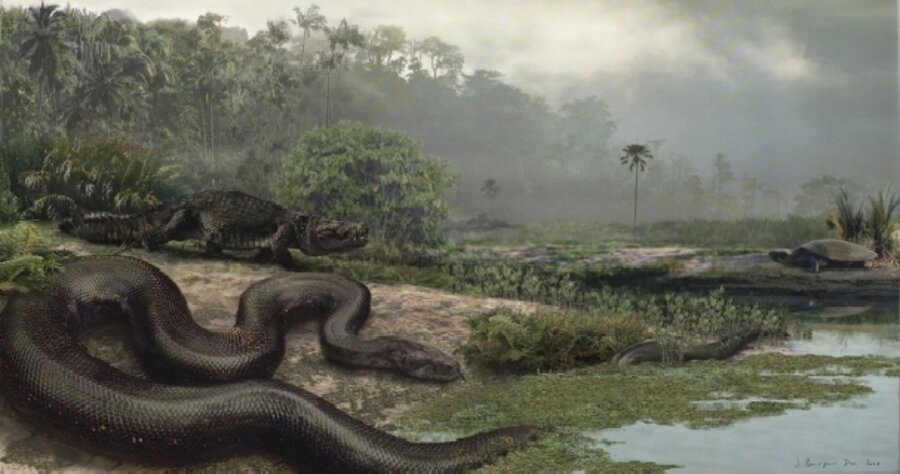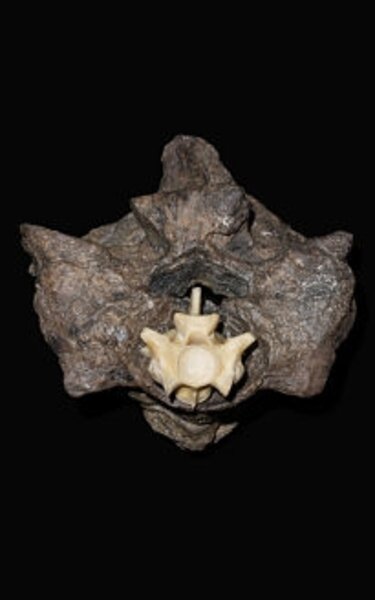Prehistoric one-ton 'super snake' ate alligators for lunch
Loading...
From deep in a vast open-pit coal mine in northern Colombia comes a tale of enormous pythons and a really warm climate in the tropics.
Scientists from Canada and the United States reported Feb. 4 that they have uncovered fossil evidence for the largest snake known to have slithered across the landscape.
The new species, dubbed Titanoboa cerrejonensis, stretched some 43 feet long. It tipped the scales at more than a ton, the international research team estimates.
The context for the find: fossilized plant remains of the oldest known rain forest in the Americas, dating to between 58 million and 60 million years ago.
What a giant snake says about the ancient climate
Finding a monstro boa is intriguing enough. But the team also uses the fossil as a kind of thermometer to estimate a rough temperature range for that spot in the topics at the time.
If their analysis holds up, it has some interesting implications for the future of the tropics as greenhouse gases – mainly carbon dioxide – continue to rise and global climate continues to warm.
The site currently is just over 11 degrees north of the equator, thanks to continental drift. But back in the day, the site was only an estimated 5.5 degrees north.
The researchers calculate that a cold-blooded creature the size of Titanoboa would require a minimum annual average temperature of between 30 and 34 degrees Celsius (86 to 93 degrees Fahrenheit) to survive.
That's warmer than annual average temperatures inferred from fossil plants in the same rock formation, notes Purdue University climate researcher Matthew Hubert. And it's roughly 3 to 4 degrees C. warmer than today's average temperature for the tropics.
The analysis suggests that the tropics may lack the natural heat-controlling thermostat that some have proposed, Dr. Hubert writes in a commentary on the research in the Feb. 5 issue of the journal Nature. (The issue also carries a formal description of the discovery.) Thus the tropics could warm substantially as atmospheric concentrations of greenhouse gases – mainly carbon dioxide – continue to rise.
Caution: Big inferences, little data
For now, however, take the temperature inferences with a hefty dose of caution, Hubert adds. This is a first-of-its-kind chain of inference – ancient snakes to ancient climates. It's not clear if one can scale up temperature tolerance of today's big snakes to cover Titanoboa. Nor is it clear that a small sample of backbone segments from the specimen truly represents the species's size.
Still, apart from what prehistoric temperatures may imply for today's warming world, they speak volumes for the ability of forests in the tropics to thrive in temperatures significantly warmer than today's.
The team notes that the layer of rock deposits bearing the snake fossils represent a coastal plain with large rivers meandering through it. Large turtles and crocodilelike animals – the team speculates they frequently appeared on Titanoboa's menu – also show up in the rock formations from this period, suggesting an ecosystem much like the type inhabited by modern-day anacondas.
Taken as a whole, the picture suggests that forerunners of several modern types of animals found in tropical regions were well in place some 6 million to 7 million years after the extinction event that closed the age of dinosaurs.






